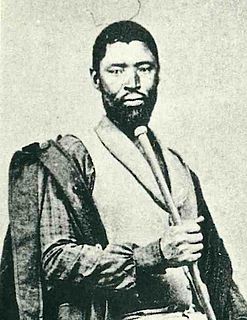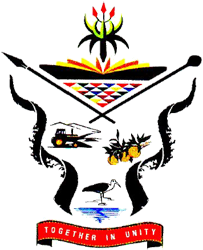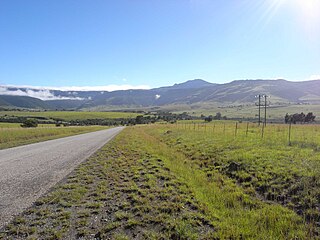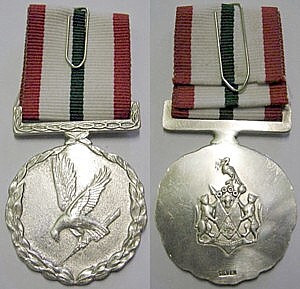| Sandile Dam | |
|---|---|
| Official name | Sandile Dam |
| Country | South Africa |
| Location | Keiskammahoek, Eastern Cape |
| Coordinates | 32°42′42″S27°6′28″E / 32.71167°S 27.10778°E Coordinates: 32°42′42″S27°6′28″E / 32.71167°S 27.10778°E |
| Purpose | Irrigation |
| Opening date | 1983 |
| Owner(s) | Department of Water Affairs |
| Dam and spillways | |
| Type of dam | zoned embankment |
| Impounds | Keiskamma River |
| Height | 58 metres (190 ft) |
| Length | 760 metres (2,490 ft) |
| Reservoir | |
| Creates | Sandile Dam Reservoir |
| Total capacity | 30,960,000 cubic metres (1.093×109 cu ft) |
| Catchment area | 348 km2 |
| Surface area | 146 hectares (360 acres) |
Sandile Dam is a zoned embankment dam located on the Keiskamma River near Keiskammahoek, Eastern Cape, South Africa. It was established in 1983 and serves mainly for irrigation purposes. The hazard potential of the dam has been ranked high (3).

A dam is a barrier that stops or restricts the flow of water or underground streams. Reservoirs created by dams not only suppress floods but also provide water for activities such as irrigation, human consumption, industrial use, aquaculture, and navigability. Hydropower is often used in conjunction with dams to generate electricity. A dam can also be used to collect water or for storage of water which can be evenly distributed between locations. Dams generally serve the primary purpose of retaining water, while other structures such as floodgates or levees are used to manage or prevent water flow into specific land regions. The earliest known dam is the Jawa Dam in Jordan, dating to 3,000 BC.

The Keiskamma River is a river in the Eastern Cape Province in South Africa. The river flows into the Indian Ocean in the Keiskamma Estuary, located by Hamburg Nature Reserve, near Hamburg, midway between East London and Port Alfred. The Keiskamma flows first in a southwestern and then in a southeastern direction after meeting its main tributary, the Tyhume River.

Keiskammahoek is a town in the Eastern Cape Province, South Africa. From 1981 until the end of apartheid, the town was part of the Ciskei bantustan.
The dam was named in honour of King Sandile, once the reigning king of the Rharhabe sub-group of the Xhosa nation.
He is the son of the late King Mxolisi Sandile Aa! Bazindlovu, who was the son of King Archie Velile Sandile, and Queen Nolizwe, the daughter of King Victor Poto Ndamase Aa! Bhekuzulu and sister to the wife of Chief Justice Thandathu Mabandla of the AmaBhele aseTyhume Tribe. He is the sixth descendant of King Mgolombane Sandile who was the son of Ngqika.
The Rharhabe are a Xhosa sub-group found in the former Ciskei section of the Eastern Cape, and they reside in the former Transkei as well. Their counterparts are the Gcaleka who are found in the former Transkei section of the Eastern Cape. The major and most well-known component of the Rharhabe are the Ngqika ("Gaika") tribe.









